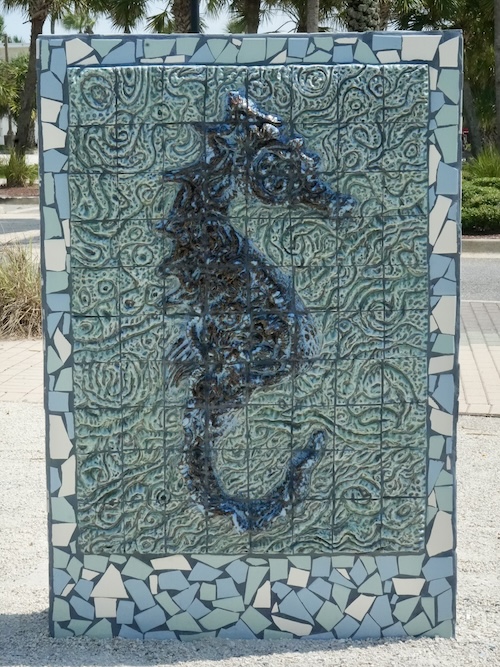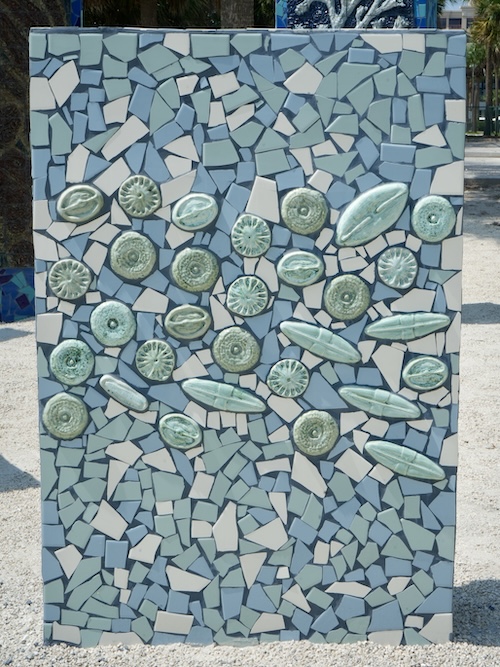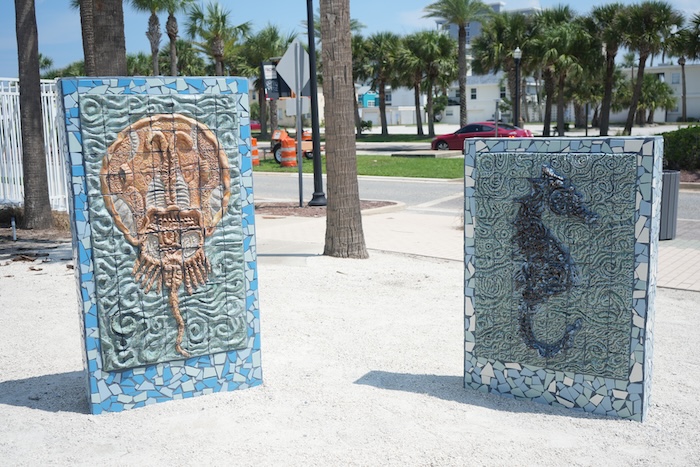Home » 2024 » Water Columns » Intertidal | Seahorse


Xavier Cortada, “Intertidal | Seahorse,” 48″ x 32″ x 8″, hand-carved, hand-glazed ceramic tile on concrete, 2024
(Water Columns series in Jacksonville Beach, FL)
Seahorse
Part of the seven-piece “Water Columns” installation, this ceramic tile work represents the intertidal zone off Jacksonville Beach. It depicts the seahorse, a small fish that relies on seagrass for camouflage and survival, emphasizing the urgent need to protect seagrass beds from climate threats.

Story
As we move into shallow coastal waters, seagrass beds make the perfect home for many marine species, including the Dwarf Seahorse – the third smallest seahorse in the world! These tiny fish like to do things their own way. They mate for life, and male seahorses carry the babies, sometimes thousands at once!
Seahorses wrap their tails around blades of grass to blend in to avoid predators. Since they are slow swimmers, they depend on their habitat to survive. Seagrass doesn’t just benefit seahorses; it also benefits people by capturing and storing carbon 35 times faster than tropical rainforests and safeguarding our coasts from erosion or strong storms. If we want seahorses to thrive, we must protect the seagrass they depend on.
Right now, seahorses and sea grass are threatened by climate change, pollution – mainly agricultural run-off – and coastal development.
These creatures and their habitat help us keep our coastal communities resilient. We can help them by picking up trash on the beach, using less fertilizer on our lawns, and avoiding anchoring in seagrass beds.
References
- Dwarf Seahorse. NOAA Fisheries. (2022, September 15). https://www.fisheries.noaa.gov/species/dwarf-seahorse/overview
- Seagrass: 10 facts about an ocean plant under threat. United Nations. (2023, March 2). https://unric.org/en/seagrass-10-facts-about-an-ocean-plant-under-threat/
- Seagrass: The lesser-known superstar in the fight against the Climate Crisis. WWF. (n.d.). https://www.worldwildlife.org/stories/seagrass-the-lesser-known-superstar-in-the-fight-against-the-climate-crisis
- Seahorses. National Geographic. (n.d.). https://www.nationalgeographic.com/animals/fish/facts/seahorses